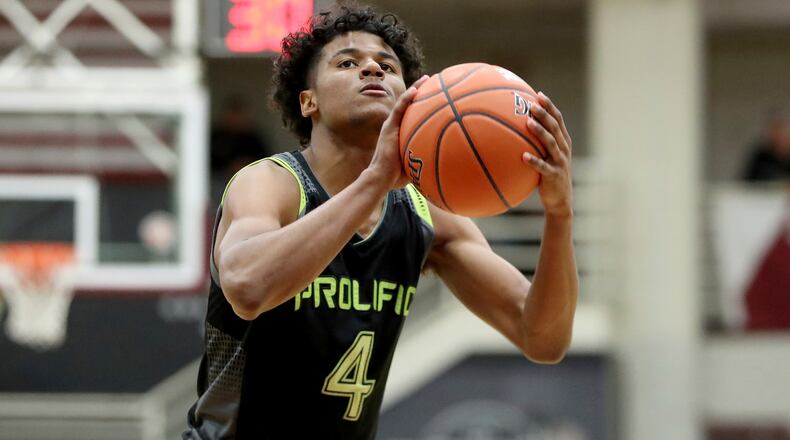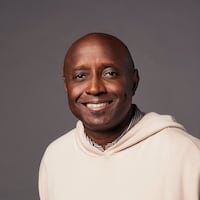None of the players in the 2019 high school class signed up for the NBA G League’s one-year program that offers top prospects a paycheck before they are eligible for the NBA draft.
NCAA boosters cited that as evidence that college basketball offers great value to elite prospects even though they aren’t paid a salary. I saw it as a function of the market because the $125,000 contract the G League offered just wasn’t enough.
It turns out I was on to something. The G League is offering more money this year, and two of the top prospects in the 2020 class are taking the deal.
California's Jalen Green signed a contract with the G League on Thursday for more than $500,000. Isaiah Todd of Richmond reportedly will join Green in the G League. I hope more prospects can get G League deals that are better options than having the value of their labor and marketing stolen by college programs.
Green’s contract shows that even top recruits who have yet to play a college game are worth much more than a scholarship. The G League may not pay any other players $500,000. But maybe they can get something between that figure and the $125,000 the G League offered last year as part of its pathway program.
“Exposure” is one of the main arguments for the value of NCAA basketball to players. That’s what companies offer when they don’t want to pay workers market salaries. Congress and the courts allow NCAA schools to collude so that “exposure” and a scholarship are pretty much all that their laborers with specialized skills can earn.
You can’t spend exposure. But it is worth something to players, even if it’s less than their true market value. Last year’s best high school seniors didn’t bite on the G League’s $125,000 offer. Green decided that $500,000-plus is his price.
Practically every top college program in the country offered Green a scholarship (he was said to favor Auburn and Memphis). Now Green doesn’t have to bother with generating significant revenue for one of them without a salary. Someone else can have the exposure while Green is paid the money he’s worth.
And there’s more to Green’s G League deal than money. The league said top prospects in its pathway program also will receive mentorship and life-skills training. Some players get those benefits in college. Green will get them plus a paycheck.
You can see the attraction of the G League program for players if the money is right and they aren’t interested in college. International pro leagues have signed some top prospects with similar developmental programs. Now the G League appears poised to up its bids for those players to keep them here.
ESPN reported that Green’s program will include exhibition games against G League teams, international clubs and squads from NBA academies around the world. NBA officials would love it if more top prep players go that route. General managers could evaluate more of them in competition against older pros NBA coaches would appreciate their teams drafting rookies who’ve already been pros and received some formal off-court development.
"The NBA is the best development system in the world, and those players shouldn't have to go somewhere else to develop for a year," G League president and Marietta native Shareef Abdur-Rahim told ESPN. "They should be in our development system."
There are some potential negatives for Green with the G League program. It’s unglamorous in comparison with big-time college basketball. He could hurt his draft stock by struggling against older professionals instead of excelling against college players. The $500,000 mitigates some of those possible drawbacks.
Another benefit to playing college basketball is the chance to work with coaches with track records of developing pros. But NCAA rules limit how much time players can practice, part of the effort to maintain the illusion they are students first. In the G League program Green will have much more time to work on the NBA-style game while getting paid for it.
Green is the third prospect in the past two high school classes to opt for a pro development program instead of college. Last year LaMelo Ball (Australia) and R.J. Hampton (New Zealand) signed with international teams (it was Ball’s third pro contract ). Hampton also signed a five-year deal with a Chinese shoe and apparel company despite not getting the “exposure” from playing in the NCAA.
The G League now may sign more prospects of that caliber. Some players still will decide to play in college or go pro in another country. But a domestic developmental league with hefty contacts would further weaken the leverage NCAA programs have over top American prospects.
There’s a chance the G League’s pathway program will be obsolete in two years. NBA commissioner Adam Silver has said he wants players finished with high school to be eligible for the 2022 draft. I’d expect owners and GMs to push back on that idea because it’s harder to evaluate high school prospects.
For now, the G League’s pathway program is another way for top high school basketball prospects to get paid before they are eligible for the draft. Green signed up for $500,000. The G League will get more players like him if it pays up.
About the Author
The Latest
Featured


